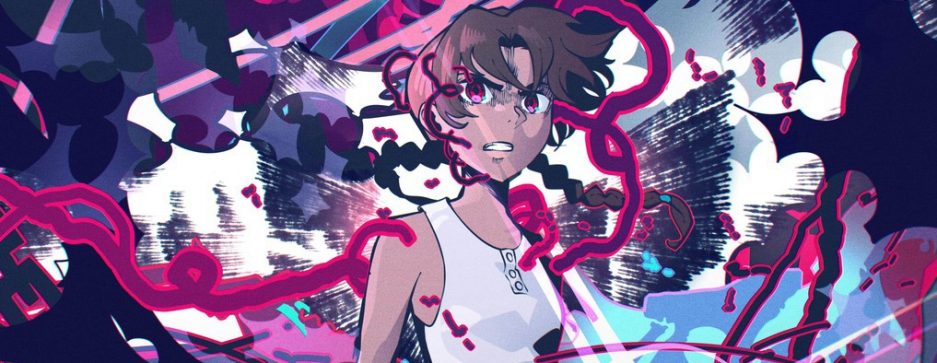Part 1 | < > | Part 3 | Part 4 | Part 5
If there was ever a point in Hiroyuki Yamashita’s career where you might’ve reasonably expected him to move on from the Naruto franchise, it would have been 2010. On the heels of his head-turning Sasuke vs. Killer B fight, Yamashita had also just directed his first ending sequence – a modest, but sweet synopsis of the series’ more dramatic moments. Meanwhile, as previously mentioned, the fourth Shippuuden movie’s production had begun, resulting in a twenty episode absence from the TV series – the longest since he debuted. In his time away, we find Yamashita participating on Keiichi Hara’s supernatural film drama: Colorful. As a Studio Sunrise production, the only obvious connection here is Norio Matsumoto, who more than likely requested that Yamashita join him. Similarly, Pierrot required his services on The Legend of the Millennium Dragon – a catastrophic box office flop of a movie. Regardless of that last point, it was Yamashita’s first work outside of Naruto in the three years since he joined, and the metaphorical door was now open for him to pursue the prestigious freelance animator life alongside his mentor. With higher remuneration rates, and more comfortable schedules typical to the film scene, few of Yamashita’s caliber would return to the weekly anime grind after getting a taste of such greener pastures.
Of course this series of articles would read very differently were that the case. Instead, to the fortune of Naruto fans, Yamashita would return to the series, and happened to be met by a promotion, along with many of its other core staff. Masaharu Watanabe embarked on his episode director journey, while Masayuki Kouda and Hiroyuki Yamashita quickly became the two brilliant unyielding bastions of Naruto’s animation direction team.
The Animation Director Era (2010 – 2013):
The role of the animation director (also referred to as “animation supervisor”) is one that aims to achieve a level of uniformity in the character art across dozens of different key animator contributions found within an episode. Ideally, they would possess the technical ability (and time!) to correct beyond just the character’s faces, and instead raise the competence of the entire surrounding cut. As viewers, we are often only privy to the final product however, which makes it difficult to tell how the animation director might have guided the process. Modern anime has the added conundrum of frequently requiring up to double digit supervisors on a single episode, with various levels of chief supervisors above them, further complicating the task of isolating individual contributions. Fortunately, Naruto was without such an issue, by virtue of being both long-running and rarely concerned with staying completely on-model, typically resulting in a single animation director taking charge of an entire episode.
This approach is not without its disadvantages though. Just as a skilled animation director can elevate the material, an unskilled one can make for an uncomfortable 20 minutes, and Naruto was certainly no stranger to the latter. In a way, this inconsistency between episodes is the defining trait of the franchise’s production (prior to Boruto at least), with artists like Masayuki Kouda and Hiroyuki Yamashita to thank for raising the bar to such unreachable heights, that the episodes they supervised often felt like they belonged to different series entirely.
In Yamashita’s case in particular, the seven episodes, single opening, and pair of movie productions he presided over in this era are among the highest quality to be found in any series with nineteen years of continuous animation. He would often reserve a scene for himself to animate on episodes which he supervised, though with how extensive his corrections were, the key animation credit almost becomes semantic when the entire episode appears touched by his hand.
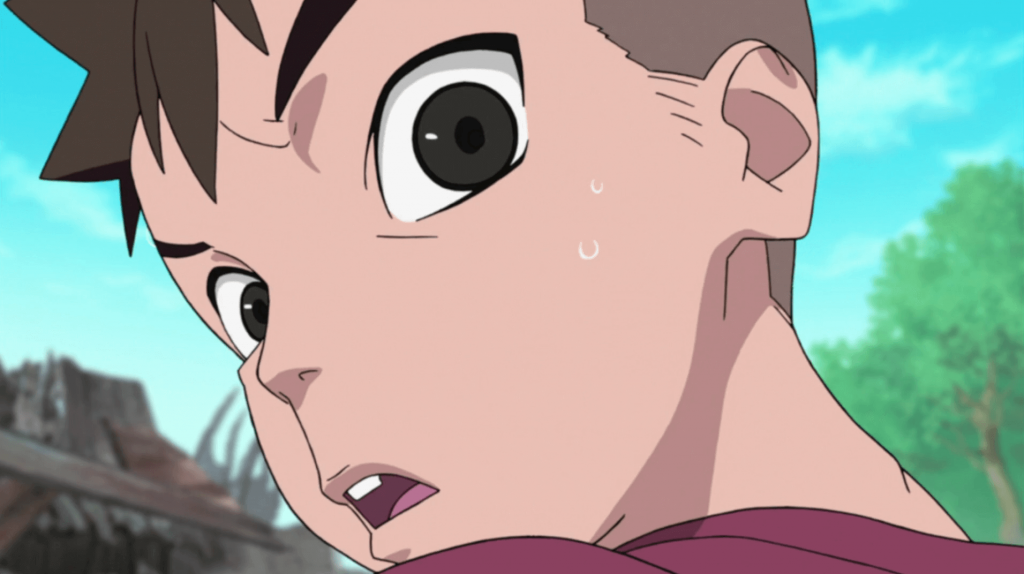


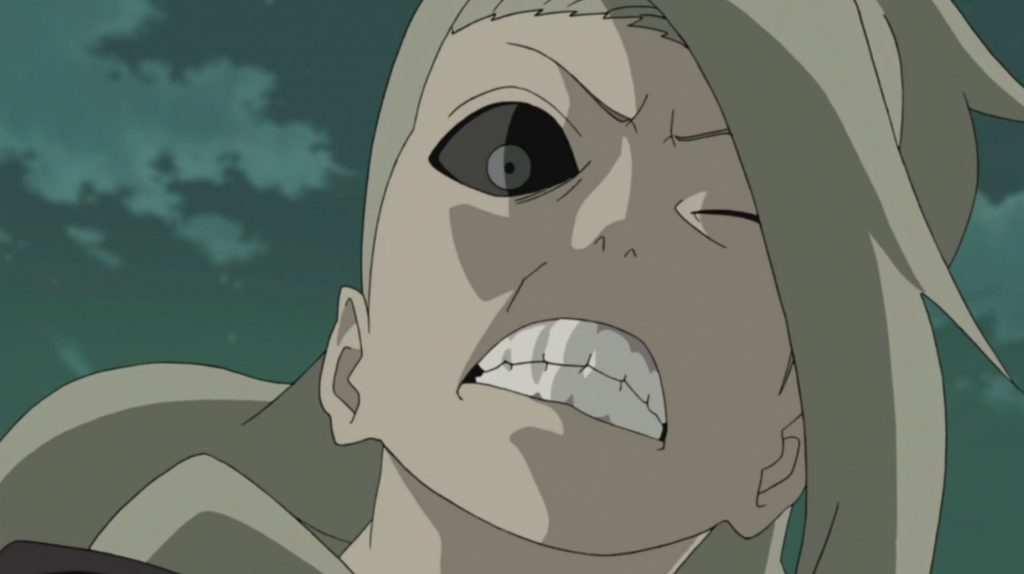
Naturally, correcting the art of others entails being familiar with the designs. However, Yamashita was so comfortable with them by this point that he began to push them to their conceivable limits. Starting with his signature ears, he often depicted them as being taut with the jaw – creating this exaggerated, kinetically-charged structure that formed the foundation of the way he would construct faces, and moreover, act as a powerful asset when designing features around it. Features which often included sharp-set corners surrounding parts of his mouths and eyes, pronounced nostrils, and individually drawn teeth. A great deal of his stylistic tendencies are directly inherited from Toshiyuki Tsuru and by extension Hirofumi Suzuki, as Yamashita was able to adopt much of their sophisticated style through their time together. To make it his own, we see him trade some of their realistic properties for a much more visceral and explosive-feeling approach instead, all while staying true to Masashi Kishimoto’s manga of course.
One of Toshiyuki Tsuru’s other traits which Yamashita inherited is his preference for lip-syncing the character’s mouths with the words they’re speaking. Every single one of Tsuru’s episodes feature this prominently, conveniently forming a mutualistic relationship with the aforementioned highly detailed, individually drawn teeth. At its basis, lip-sync is more of a tedious process than a skillful one. It requires having the script in hand with the time and patience to constantly reference it. Two things which are already in short supply before considering the burden it places on the editing team tasked with ensuring the audio/visual sync actually happens. For this reason it is easy to see why the majority of anime employs very basic lip-flapping instead. However, the Naruto series’ standout episodes always aimed to draw out the emotion in the words at the most crucial moments, which requires a great deal of skill and was well worth the accompanying headache.
In the previous part, I used Yamashita’s Sasuke vs. Killer B scene as a quintessential example of his ability to engage the viewer through anticipation-laden animation – with spacious gaps placed between drawings. Clearly comfortable with his abilities as an animator at this point, Yamashita would play with that idea further, experimenting with extremely dramatic action lines, and detached, smeary limbs in a way reminiscent of the Neo-Kanada sensibilities familiar to a group of friends who around this time were leaving Gainax to found a new studio called Trigger.
This small wrinkle would eventually fade out of Yamashita’s repertoire, perhaps also due to having fewer opportunities with comedic content as time went on, but it nonetheless highlights an easy-going period of his career, during which he had clearly arrived at a ceiling of some sort as an animator, and thus began to experiment with new ideas. To that end, we also find Yamashita augmenting his animation by integrating different mediums.
Unlike the action lines, this would be something he carried throughout his time on Naruto, progressively adding various flourishes in small doses. Yamashita’s supervision on #248 is particularly special for this reason, though I can only regret not being able to offer greater transparency when it comes to how the scene in which the 9-tailed fox terrorizes the Hidden Leaf Village came about.
Tatsuya Koyanagi, another of Naruto’s top action animators, was involved here, and likewise carries evidence of enhancing his key animation with thick, inky lines from time to time. Regardless of which animator’s prerogative it was in this case (perhaps even both), the result features folklore spirit spilling over a scene that could not be more suited for this approach. A comparison to the manga is almost unfair with how exceptionally well the anime interprets this scene.
The inspiration to start experimenting in this way may have come from an encounter with none other than Yoshimichi Kameda on Shippuuden’s fifteenth ending sequence, directed by Hiroyuki Yamashita. This encounter wasn’t by chance, however, as Yamashita personally reached out to invite Kameda following his memorable contributions to Fullmetal Alchemist: Brotherhood. This implies he was already taking notes on other notable animation efforts around the industry, and could explain why he began to incorporate different tools like the aforementioned ink into his work around this time. For what it’s worth, Tatsuya Koyanagi also participated on this ending, so again, it’s entirely possible Yoshimichi Kameda’s idiosyncrasies rubbed off on both of them. In any event, it’s a fan favorite ending and for good reason. The single tone backgrounds serve as a remarkably effective backdrop to showcase the physicality native to Naruto’s brand of action. By mirroring the animation through silhouettes, Yamashita takes a page out of the book of Toshiyuki Tsuru. These creative efforts only go so far without the necessary action talents, however, and luckily for Yamashita, Yoshimichi Kameda is one of the best in the business – lending his sharp drawings and inky action lines to the frenetic final sequence between Naruto and Rock Lee.
Ultimately, these three years were a relatively turbulence-free time for Naruto, which allowed Yamashita the freedom to refine his repertoire and build on his professionalism as an animator. If working on Naruto as a fan ever turned into a proper job for him (and I’m sure there were times when it did), he deserves the utmost credit for it being impossible to tell in his body of work. By the end of this era he was already long since established as a cornerstone artist of the franchise, and perhaps even overdue to take the next step.
The Episode Director Era (2013 – 2014):
With his influence already far exceeding the norm for an animation director, it stands to reason that upon being tasked with every aspect of an episode, Yamashita would transform the source material into something else entirely. And that he did. The three episodes he directed in #322 – “Madara Uchida”, #345 – “I’m in Hell”, and #375 – “Kakashi vs. Obito”, are among the most noble efforts in the entire franchise, each possessing remarkable stand-alone re-watch value, and rivaling the precedent set by Atsushi Wakabayashi and Toshiyuki Tsuru before him. Perhaps more impressive is the way Yamashita produced them while working within the limitations of everyday Studio Pierrot staff. Finding himself without the luxury of lucrative freelancers and friends from around the industry to come to his aid, he instead fostered his own small group of up-and-coming animation talents, most notably Naoki Kobayashi and Toshiro Fujii – both of whom would pay massive dividends from the very start.
You may be wondering how such an important scene could have ended up in the hands of a total newbie, and while Kobayashi’s prodigious talent has its part to play – especially in the outcome – the opportunity likely would not have been there were it not for the situation brewing within the studio at the time.
A topic deserving of its own piece entirely, Studio Pierrot president and founder Yuji Nunokawa announced his retirement in the second half of 2012. Under new management in Michiyuki Honma, Naruto rapidly hemorrhaged animation staff to the uptick in late-night anime Pierrot were producing – as well as to other studios – with a mini-exodus to A1 Pictures being particularly fatal. If tracking the credits (or lack thereof) wasn’t evidence enough, Naoki Kobayashi has also mentioned that this episode had planning problems, fell short of staff, and forced him into as large of a main role as it did. All this to say, a stressful era had dawned on the Naruto franchise, and without Hiroyuki Yamashita to serve as the backbone of the production, it’s possible we’re looking at a very different landscape in the current year.
As far as his directorial debut goes, #322 is home to Madara Uchiha’s introduction: one of the primary antagonists of the series and a figure that was foreshadowed since the very first episode of Shippuuden – which is to say, this was highly anticipated content. But in retrospect, the anime deserves most of the credit in making Madara’s one-man-army rampage the iconic moment that it is, not just in the way it adapts the manga but by virtue of many of its highlights being completely original.
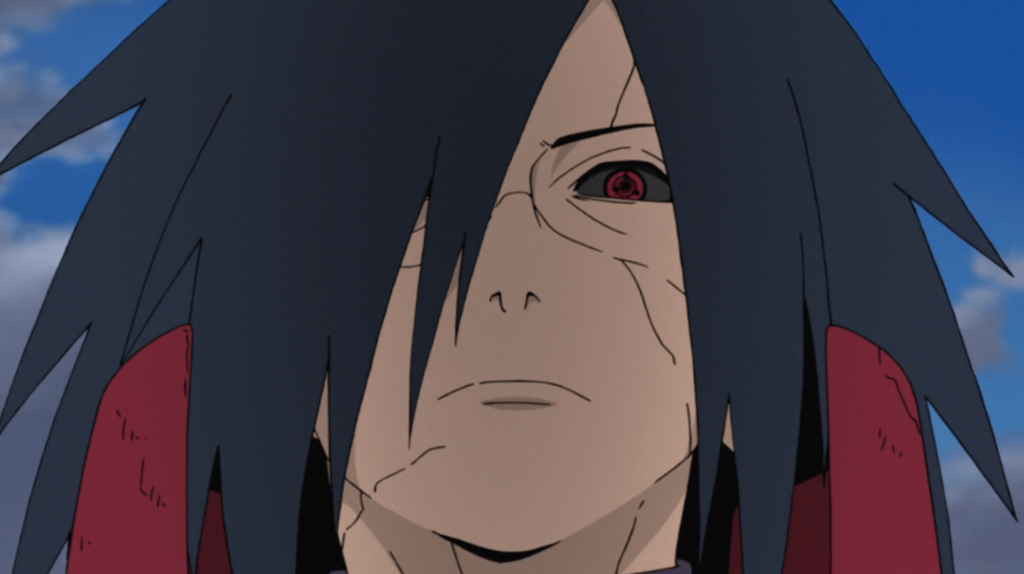
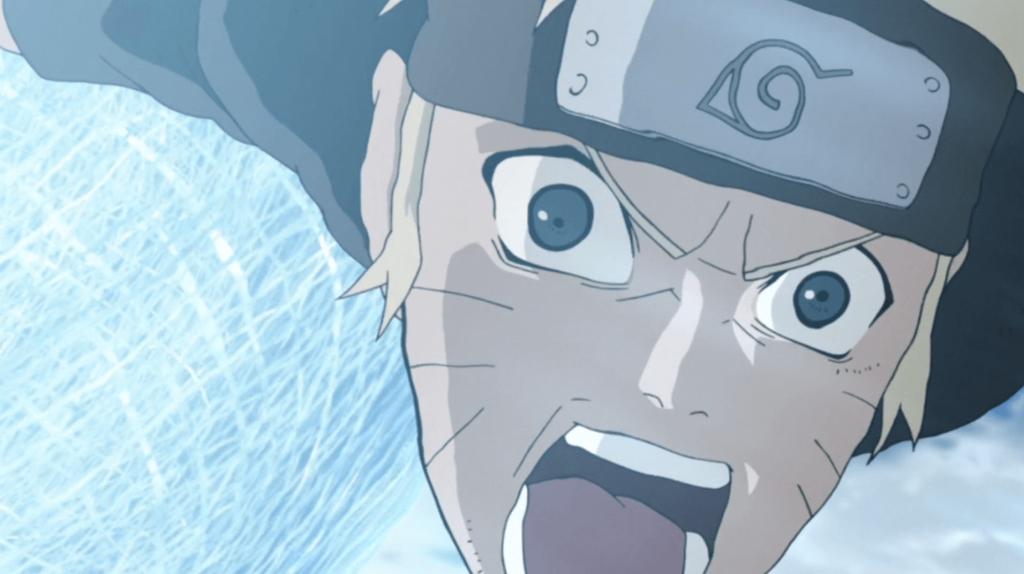

Hiroyuki Yamashita’s understanding of Naruto’s world, characters, and power system were second to none on the staff, making him the ideal candidate to expand on the source material in creative ways. Accordingly, his biggest achievement with this episode is the way he repeatedly framed the imposing figure of Madara Uchida not from the perspective of our protagonist, but from a common foot soldiers’ instead. Until now they’ve lived and died in this war as nameless fodder, with very little made of their presence. While they nonetheless remain as fodder, at this moment their collective anxiety is realized. They prepare. They pray. They stand suspended in fear as an opponent who is immeasurably superior to their entire combined strength approaches.
Even after Naruto and company join the fray, we’re constantly reminded of the humanity of the mob through nuances such as these quivering hands, and my personal favorite: charismatic swearing after experiencing utter disbelief. This approach is also very much opposed to the deep-seated shounen-anime philosophy where we always find main characters front and center. Had that been the case here, the wonderfully tense calm before the storm simply wouldn’t reach the same register.
The massive scale of the episode, in combination with all the original content Yamashita brainstormed for #322 likely factored into its troubled pre-production, which is why I would assume he toned it down for the next one. In the middle of the three episodes he directed at this time, we find #345 – Yamashita’s least eventful, but still largely inspired. It similarly features Naoki Kobayashi in a main role, with Toshiro Fujii and the rest of whoever was available at Pierrot in support. The combination of fewer action scenes and simultaneously sticking closer to the manga would offer the time to deliver a more polished effort. From a production perspective it’s easily his cleanest.
Particularly of note is an unexpected animation technique which Yamashita employed for the first time. To capture the intimacy of Rin’s affection, he opted to rotoscope a single cut. This would go on to become a staple of his work, and as of writing this, there has yet to be an episode or opening directed by Yamashita that hasn’t featured rotoscope in some way.
Rotoscoping involves tracing live-action footage to recreate the scene in a faithful way. The origins of the technique date back to nearly the birth of 2D-animation itself making it a staple of the artform, especially in the west. As it relates to anime however, rotoscope has more of a complicated history, perhaps owing to how uncanny the full-bodied movement often feels in comparison to the more limited approach surrounding it. And it’s exactly that discrepancy that makes Yamashita’s deployment of this technique so powerful. Its short-lived and selective nature means most viewers will fail to realize something as significant as the entire animation pipeline changing for a single cut, meanwhile the realistic (or sometimes uncanny) sensibility gained through camouflaging live-action in this way is felt at a subconscious level.
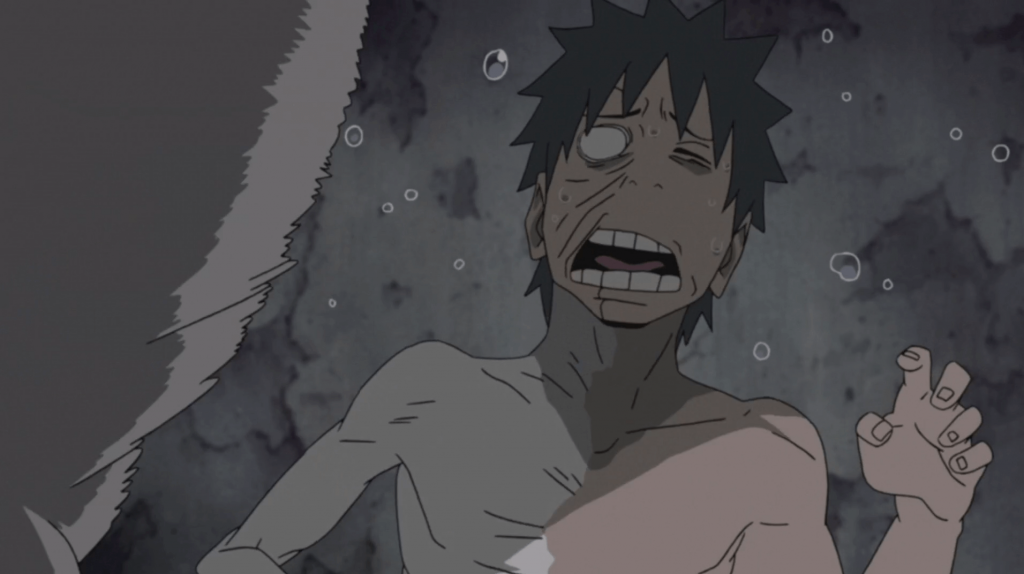
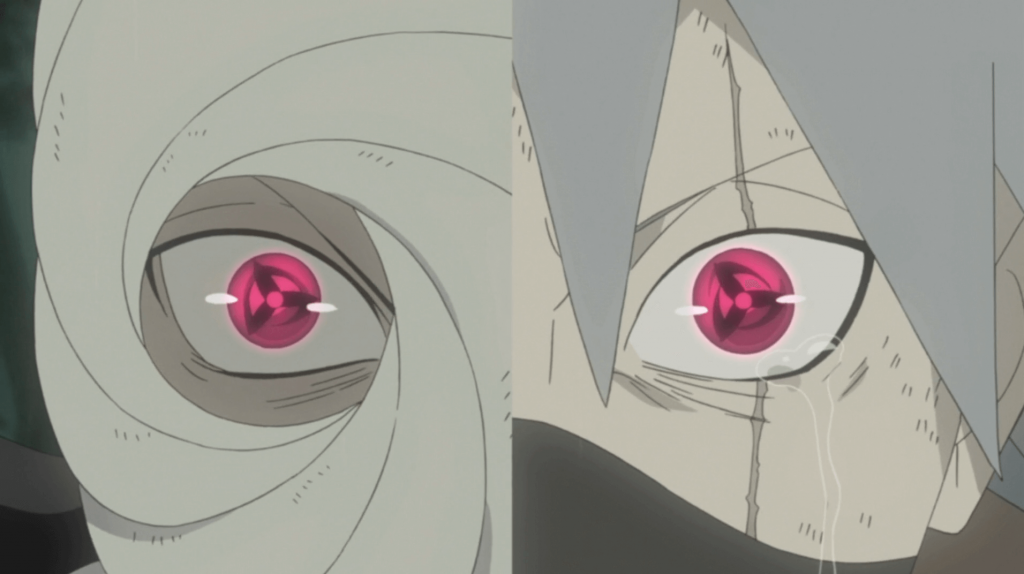
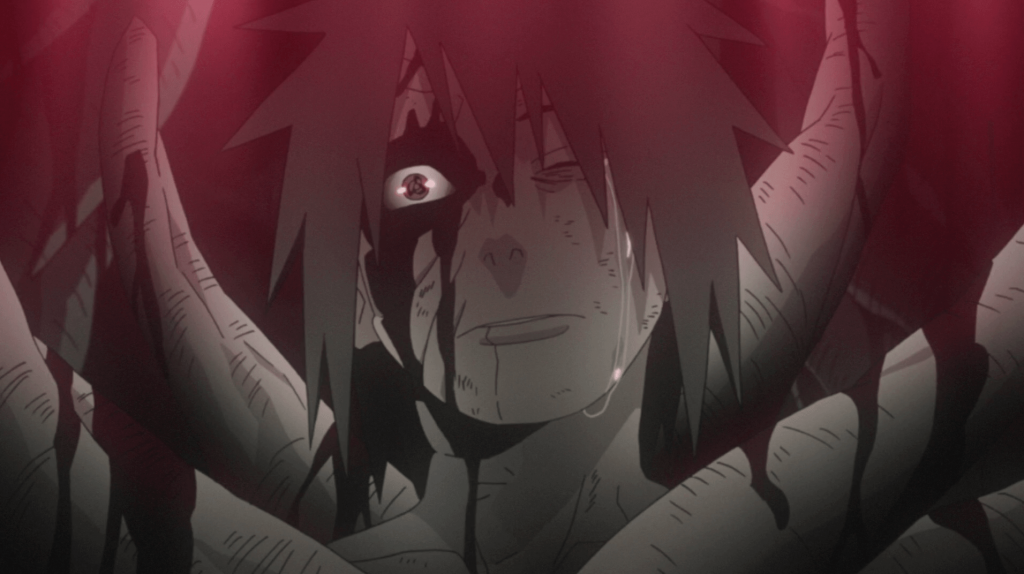
“I’m the type who has trouble conveying my opinions to other people. So I probably like the position of being the key animation director over being an episode director (laughs).” –Hiroyuki Yamashita
With the above quote in mind, it would seem by the time of his third outing, Yamashita had developed a new strategy when it came to distributing cuts. By this I mean Naruto Shippuuden #375 has only four key animators credited, as opposed to the usual dozens. Perhaps Yamashita realized if he was re-drawing every non-action cut anyways, the need for a diversified roster of artists diminishes. In any event, we find Naoki Kobayashi yet again as the centerpiece of the episodes’ action, with Kenichi Fujisawa (a fellow Norio Matsumoto’s student) and Tatsuya Koyanagi joining him on that front. The gaps are filled by Emi Kouno alone, whose purpose here was likely just to give a rough scaffold for Hiroyuki Yamashita to work his magic on – and to the surprise of absolutely nobody at this point, nearly the whole episode appears drafted by his hand.
His influence would extend far beyond the drawings this time, to where it’s fair to say Kakashi’s confrontation with Obito is instead mainly remembered for Yamashita’s total overhaul of the art direction. By way of a “kagenashi” (shadowless) approach to the drawings, paired with grey (instead of the usual black) outlines, we experience their clash through a strikingly attractive lens, and one that, like so many of this series’ historic efforts, rests many orders of magnitude away from the baseline.
As far as action storyboards go, you would be hard-pressed to find one more critically involved than this, even by Naruto’s historic precedents. It hinges mainly on an idea lifted from Masashi Kishimoto’s manga: the weaving of Kakashi and Obito’s past and present selves throughout the combat. This aspect in particular happened to be much better suited to the animated medium however, aided in large part by the slick transitions and massive amounts of intricate choreography orchestrated by the formidable trio of Hiroyuki Yamashita, Kenichi Fujisawa, and Naoki Kobayashi.
Soundtrack choices are frequently issued by the series director, but especially by this point I would imagine Naruto’s Hayato Date had no reason to interfere with anything in the hands of Hiroyuki Yamashita. Yamashita has likewise mentioned his job as an episode director involved a lot of music placement decisions and meticulous editing of the finished animation. In any case, the episode is elevated greatly for employing the most tragic OST over the dichotomy of friendly sparing versus deadly violence. In comparison, the manga feels restrained. Introducing many of the ideas, but as a consequence of its medium, unable to push the tragic narrative nearly as far as Yamashita’s direction was able to.
Still with his ace up his sleeve and met with impeccable timing as always, we find a single cut – likely rotoscoped – at the end of an exhausting several minutes of action. The unsettling collapse of Kakashi’s hand as it melts under the weight of the live-reference simultaneously creates this eerily horrifying reaction befitting of anyone found with their arm half-way though another person’s torso.
I have mainly focused on the action part of the episode because it is where its inspiration is largely focused, but the rest of #375 is no slouch either. Yamashita and Tatsuya Koyanagi combine again for some ink-laden greatness, and the build up to the 10-tails Obito reveal at the end is particularly astonishing. Overall, this can be considered the strongest of the three episodes Yamashita had directed to this point, striking a healthy balance between the ambition of #322 and the polish of #345.
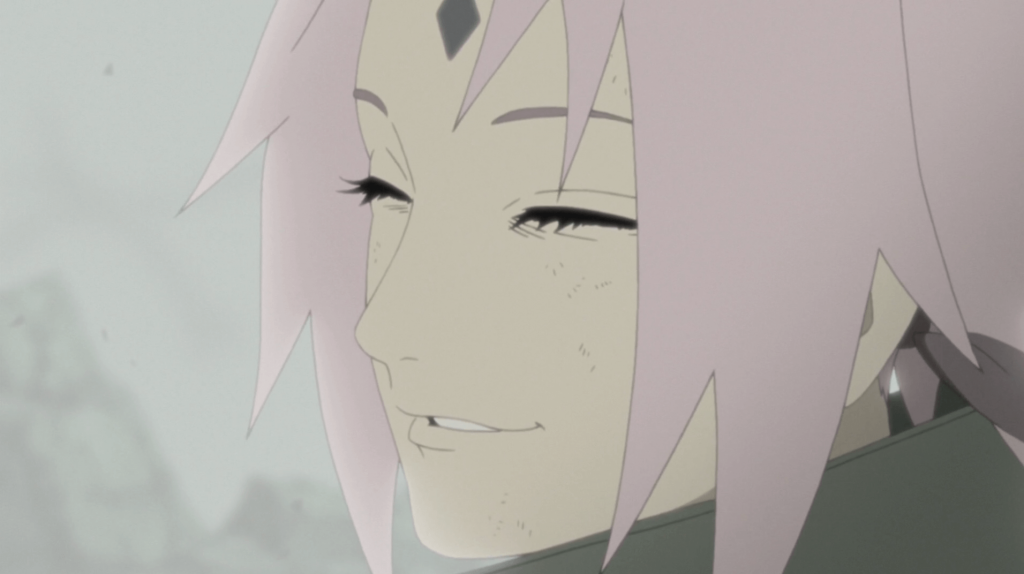
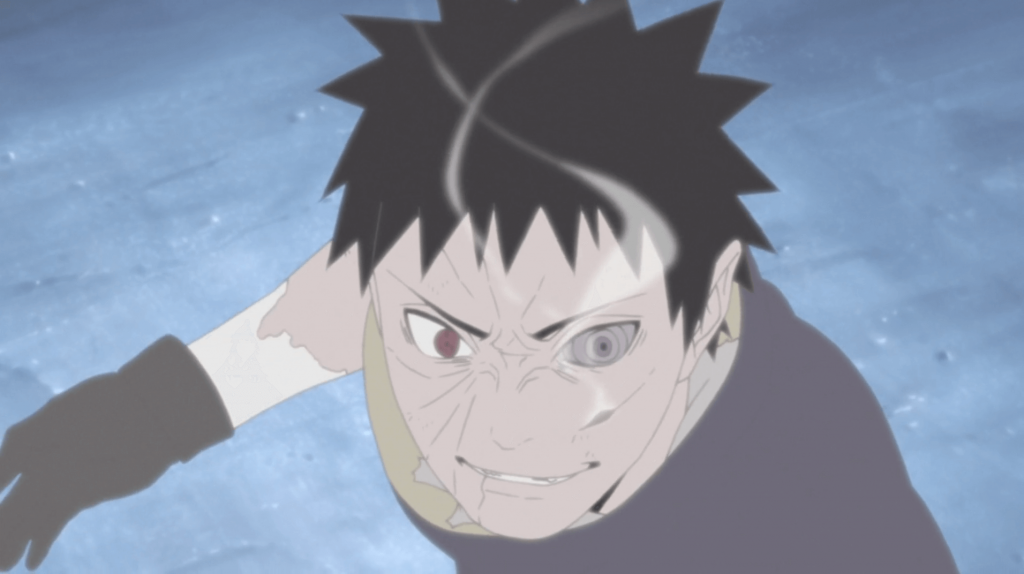
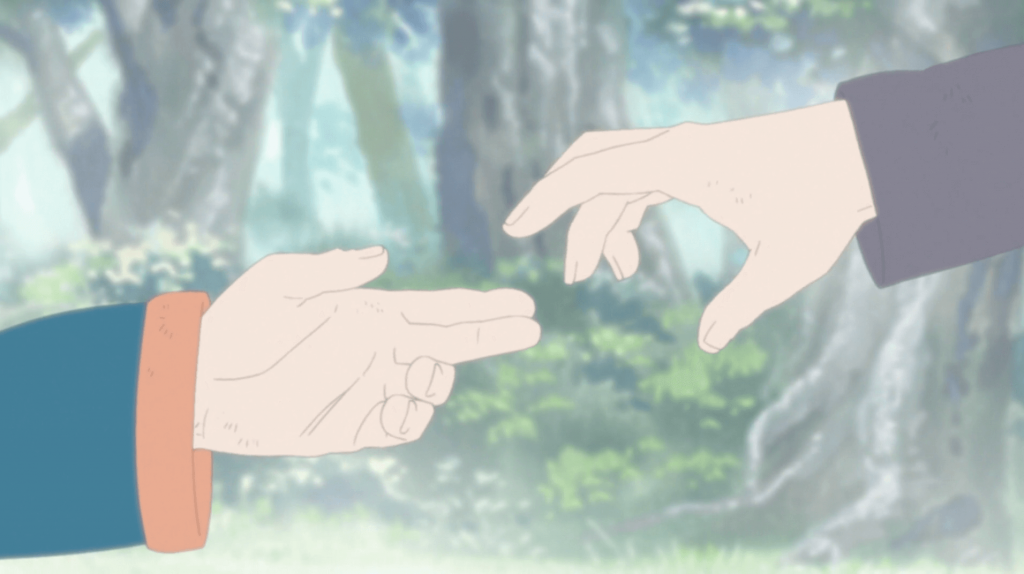
With his astonishing output over these couple of years, Naoki Kobayashi earned the right to join Kenichi Fujisawa under the wing of Norio Matsumoto, to whom he credits Yamashita for introducing. Much like the opportunity Yamashita had at the start of the decade, this marked the start of Kobayashi’s movie animator career, joining Norio Matsumoto on Makoto Shinkai’s international hit, Kimi no na wa, before rekindling his connection with Studio Khara, and making many more theatrical stops along the way. Fortunately, despite being well over-qualified, Kobayashi never forgot his roots, returning to Naruto’s production several more times before the end, and naturally, always at the behest of Hiroyuki Yamashita.
At this point, Yamashita was already looking ahead to the next major event the anime was set to adapt, and under different circumstances, we would have seen him direct his fourth episode in this stretch: #421 – “The Sage of Six Paths”, featuring the fight between Madara and 8 Gates Gai. Shueisha, however, had other plans, spurred by Naruto ending its 15 year run in Shonen Jump Magazine, on November 10th, 2014. The final chapter is a bitter-sweet farewell with a focus on the next generation, Naruto’s family and the future of the Hidden Leaf Village. Many were satisfied in thinking that this would be the note the franchise would end on, that is, until the sudden announcement of Boruto: Naruto the Movie…
